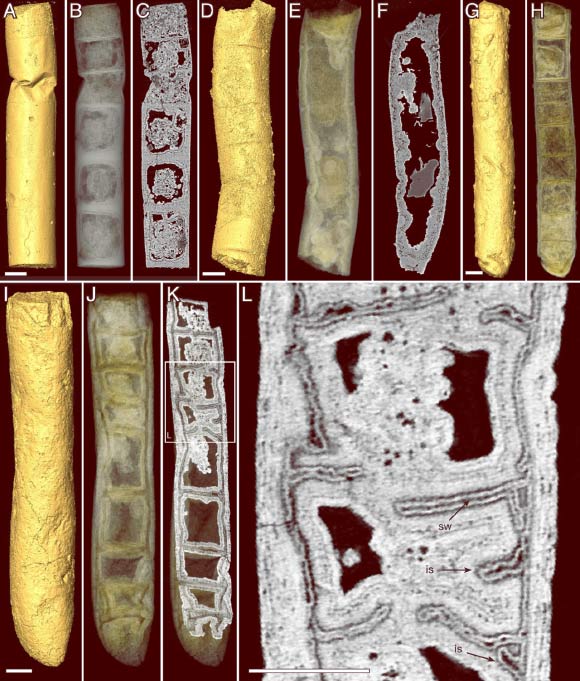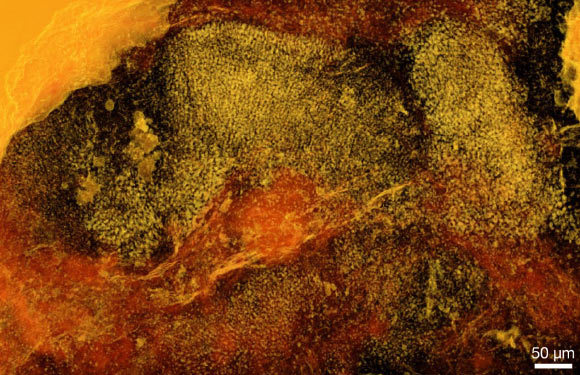An international team of paleontologists from the Nordic Center for Earth Evolution and the Swedish Museum of Natural History has unearthed uniquely well-preserved fossils of 1.6 billion-year-old crown-group rhodophytes (red algae).
The extraordinarily preserved fossils came from phosphorite deposits at Jankikund, Chitrakoot, central India.
The samples were analyzed by Professor Stefan Bengtson at the Swedish Museum of Natural History and co-authors.
The researchers found two kinds of fossils resembling red algae: one type is thread-like (named Rafatazmia chitrakootensis), another consists of fleshy colonies (Ramathallus lobatus).
The finds predate the previously earliest accepted red algae by about 400 million years, suggesting that eukaryotes may have a longer history than commonly assumed.
“The last common ancestor of modern eukaryotes is generally believed to have lived during the Mesoproterozoic era, about 1.6 to 1 billion years ago, or possibly somewhat earlier,” Prof. Bengtson and his colleagues said.
“We studied exquisitely preserved fossil communities from 1.6 billion-year-old sedimentary rocks in central India representing a shallow-water marine environment characterized by photosynthetic biomats.”
“We discovered amidst extensive cyanobacterial mats a biota of filamentous and lobate organisms that share significant features with modern eukaryotic algae, more specifically red algae.”

Rafatazmia chitrakootensis, synchrotron-radiation X-ray tomographic microscopy renderings. Abbreviations: sw – septal wall, is – incomplete septum. Scale bars – 50 μm. Image credit: S. Bengtson et al, doi: 10.1371/journal.pbio.2000735.
The team was able to look inside the algae with the help of synchrotron-based X-ray tomographic microscopy.
“The rocks mainly consist of calcium and magnesium carbonates, but the microbial mats and the fossils are preserved in calcium phosphate, letting us view the cellular and subcellular structures in three dimensions with the use of synchrotron-radiation X-ray tomographic microscopy,” the researchers explained.
Among other things, they found regularly recurring platelets in each cell, which they believe are parts of chloroplasts, the organelles within plant cells where photosynthesis takes place.
They also found distinct and regular structures at the center of each cell wall, typical of red algae.
“The earliest traces of life on Earth are at least 3.77 billion years old. Those single-celled organisms, unlike eukaryotes, lack nuclei and other organelles,” the scientists said.
Large multicellular eukaryotes became common much later, about 600 million years ago, near the transition to the Phanerozoic Eon, the ‘time of visible life’.
“The ‘time of visible life’ seems to have begun much earlier than we thought,” added Prof. Bengtson, lead author of a paper about the discovery in the journal PLoS Biology.
_____
S. Bengtson et al. 2017. Three-dimensional preservation of cellular and subcellular structures suggests 1.6 billion-year-old crown-group red algae. PLoS Biol 15 (3): e2000735; doi: 10.1371/journal.pbio.2000735








